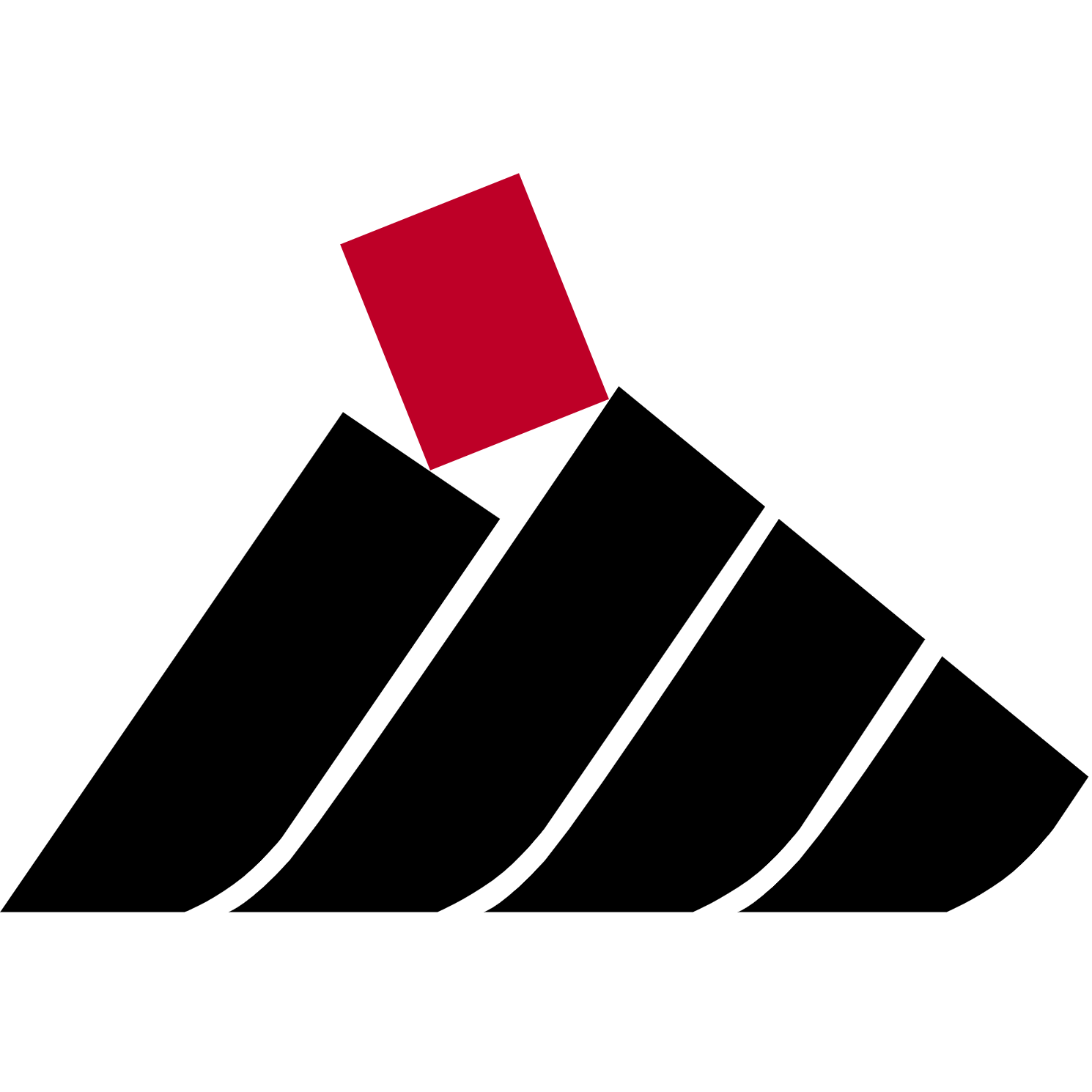PICC P&C(02328)
Search documents
中国财险(02328) - 2025 Q3 - 季度业绩
2025-10-30 08:39
Financial Performance - For the first three quarters of 2025, the company achieved insurance service revenue of RMB 385.92 billion, a year-on-year increase of 5.9%[4] - The net profit for the same period was RMB 40.27 billion, reflecting a significant year-on-year growth of 50.5%[4] - The original insurance premium income reached RMB 443.18 billion, with a year-on-year increase of 3.5%[5] - Operating revenue for the nine months ended September 30, 2025, reached RMB 423,005,875 thousand, a rise of 7.9% compared to RMB 392,267,034 thousand for the same period in 2024[14] - Net profit for the nine months ended September 30, 2025, was RMB 40,267,743 thousand, reflecting an increase of 50.9% from RMB 26,750,367 thousand in 2024[14] - The insurance service revenue for the nine months ended September 30, 2025, was RMB 385,921,374 thousand, an increase of 5.4% from RMB 364,306,286 thousand in 2024[14] Investment Performance - The company reported a total investment income of RMB 535.90 billion, which is a 33.0% increase compared to the previous year[9] - The unannualized total investment return rate was 5.4%, up by 0.8 percentage points year-on-year[9] - Investment income rose to RMB 17,078,000 thousand for the nine months ended September 30, 2025, compared to RMB 10,900,947 thousand in 2024, marking a growth of 56.5%[14] - Cash inflow from investment activities totaled RMB 175,744,620 thousand for the nine months ended September 30, 2025, compared to RMB 104,970,577 thousand in 2024, showing a substantial increase[15] Underwriting and Cost Management - The underwriting profit for the first three quarters was RMB 314.87 billion, showing a remarkable year-on-year growth of 130.7%[7] - The comprehensive cost ratio improved to 49.61%, a decrease of 2.1 percentage points year-on-year[7] Capital and Solvency - As of September 30, 2025, the actual capital stood at RMB 294.75 billion, an increase of 11.0% from the previous year[12] - The solvency adequacy ratio rose to 243.7%, an increase of 11.1 percentage points compared to December 31, 2024[12] Assets and Liabilities - The company's total assets increased to RMB 829,759,642 thousand as of September 30, 2025, up from RMB 773,926,554 thousand as of December 31, 2024, representing a growth of approximately 7.2%[13] - The company's total liabilities increased to RMB 539,884,947 thousand as of September 30, 2025, from RMB 515,875,306 thousand as of December 31, 2024, an increase of approximately 4.7%[13] - The total equity attributable to shareholders reached RMB 289,874,695 thousand as of September 30, 2025, up from RMB 258,051,248 thousand as of December 31, 2024, representing a growth of 12.3%[13] Cash Flow - Cash flow from operating activities generated a net amount of RMB 34,562,485 thousand for the nine months ended September 30, 2025, compared to RMB 22,479,609 thousand in 2024, indicating a significant improvement[15] - The company reported a significant increase in cash and cash equivalents, with a net increase of RMB 1,521,139 thousand for the nine months ended September 30, 2025, compared to RMB 1,290,483 thousand in 2024[15] Strategic Focus - The company continues to focus on digital transformation and enhancing operational management capabilities to drive high-quality development[4]
【金融街发布】中国人保财险发布“PICC中国养殖业风险巨灾模型”
Zhong Guo Jin Rong Xin Xi Wang· 2025-10-30 08:23
Core Viewpoint - The 2025 Central Document No. 1 emphasizes the need to enhance the supply guarantee capacity of important agricultural products, with livestock farming playing a crucial role in ensuring national food security and promoting rural economic prosperity [1]. Industry Overview - The livestock industry in China has shown steady development, with total production of pork, beef, mutton, and poultry reaching 96.63 million tons in 2024, reflecting a year-on-year growth of approximately 0.2% [1]. - Despite this growth, the industry faces significant risks, particularly from animal diseases and natural disasters, which can adversely affect livestock output and economic benefits [1]. Risk Management Innovations - China Pacific Insurance (PICC) has developed the "PICC China Livestock Catastrophe Model," the first of its kind independently created by a Chinese insurance company, aimed at enhancing risk management in the livestock sector [3][5]. - The model incorporates advanced concepts and technologies from domestic and international catastrophe modeling, addressing various risk factors including infectious diseases, non-infectious diseases, and meteorological disasters [3][5]. - Utilizing a robust data foundation from nearly 1.8 billion risk-related insurance and claims records, the model covers over 2,800 counties in China and includes multiple disease causative agents and disaster types [3][5]. Future Directions - PICC plans to continue optimizing the catastrophe model and engage in extensive technical exchanges with industry stakeholders to explore more advanced risk assessment methods, thereby contributing to the high-quality development of China's livestock industry [5].
3Q25 人身保险业责任准备金评估利率专家咨询委员会例会点评:会议表述转向积极肯定,中期预定利率上限调整概率不大
ZHONGTAI SECURITIES· 2025-10-30 07:22
Investment Rating - The report maintains an "Overweight" rating for the industry [1] Core Insights - The recent meeting of the Life Insurance Industry Liability Reserve Assessment Rate Expert Consultation Committee expressed a more positive outlook compared to the previous quarter, indicating a reduced likelihood of adjustments to the upper limit of the preset interest rate in the medium term [4][5] - The preset interest rate research value for ordinary life insurance products is currently at 1.90%, down from 1.99% in the previous quarter, reflecting a year-on-year decrease of 9 basis points [4] - The report highlights that the long-end interest rates have stabilized since the beginning of 2025, with the decline in preset interest rates showing a narrowing trend [4] Summary by Sections Industry Overview - The total market capitalization of the industry is 33,163.22 billion [1] - The report notes that the financial regulatory authority has issued a notification to establish a mechanism linking preset interest rates with market rates, which is expected to guide companies in prudent pricing and asset-liability management [4][8] Market Trends - The meeting's statements have shifted from concerns about continuous declines in medium to long-term interest rates to a more optimistic view on the resilience and vitality of the national economy [4] - The report suggests that if long-end interest rates remain stable, the preset interest rate for 2026 may not see significant adjustments, with a projected value of 1.87% by the end of 2026 [4][10] Investment Recommendations - The report recommends actively monitoring the valuation and performance elasticity of listed insurance companies, particularly focusing on companies such as New China Life Insurance, China Life Insurance, China Property & Casualty Insurance, Ping An Insurance, China Pacific Insurance, and AIA Group [4]
智通港股投资日志|10月30日





智通财经网· 2025-10-29 16:03
Group 1 - The article provides a list of companies and their respective activities related to shareholder meetings, new stock activities, performance announcements, and dividend distributions scheduled for October 30, 2025 [1][2][5][7]. - Several companies are mentioned as being in the process of initial public offerings (IPOs), including 旺山旺水-B, 均胜电子, 文远知行-W, and 赛力斯 [6]. - Companies such as 美的集团 and 翰森制药 are noted for their dividend distribution dates, indicating ongoing shareholder returns [7][8]. Group 2 - The article highlights the resumption of trading for companies like 舍图控股, 鸿盛昌资源, and 安能物流, suggesting a return to market activity after previous suspensions [6][7]. - The document lists various companies involved in dividend payouts, which may attract investor interest due to potential income generation [8]. - The presence of multiple companies in the IPO stage indicates a potentially active market environment for new investments [6].
人保财险:积极推动在上海发行巨灾债券
Zheng Quan Shi Bao Wang· 2025-10-29 12:53
Core Viewpoint - The Shanghai International Reinsurance Center is advancing its development, with a focus on issuing the first domestic catastrophe bonds in Shanghai starting in 2024, as stated by the Deputy General Manager of the Shanghai Reinsurance Operations Center of PICC Property and Casualty [1] Group 1 - The company aims to actively promote the issuance of catastrophe bonds in Shanghai, aligning with the construction of the Shanghai International Reinsurance Center [1] - A policy research report on new risk transfer products has been completed in accordance with the requirements of the financial regulatory authority [1] - The company is seeking support from national and local governments to facilitate the issuance of catastrophe bonds, enhancing the capacity for catastrophe risk transfer [1]
从伤员救治到健康管理,开启“保医”联动新篇章
Sou Hu Cai Jing· 2025-10-29 08:45
Core Points - The strategic cooperation between China People's Property Insurance Company Nanjing Branch and Jiangsu Provincial Hospital marks a new chapter in collaboration, focusing on the "insurance + healthcare" innovative service model [1][4] - The partnership aims to enhance customer service capabilities, starting with exploratory cooperation in areas such as road injury treatment and health insurance client medical guidance [3] - The collaboration is a response to the "Healthy China" national strategy, aiming to create a model for cross-industry cooperation between insurance and healthcare [4] Group 1 - The signing ceremony was attended by key leaders from both organizations, highlighting the importance of this strategic partnership [1][3] - The cooperation will initially focus on specific areas and gradually expand to include management and data sharing, providing more precise and personalized services to clients [3] - Both organizations emphasize the integration of their strengths, with the insurance company providing extensive customer resources and efficient claims services, while the hospital offers advanced medical technology and clinical experience [3] Group 2 - The partnership aims to innovate in the "police-insurance-medical" linkage mechanism and explore deep cooperation in special medical services and commercial insurance with public hospitals [3] - The collaboration is expected to contribute significantly to the health and well-being of the public, aligning with national health initiatives [4]
巨灾风险如何不“爆表”?保险公司“侧挂车”?
Jing Ji Guan Cha Wang· 2025-10-29 06:05
Core Insights - The Financial Regulatory Bureau has issued a notification supporting domestic insurance companies to issue "sidecar" insurance-linked securities in the Hong Kong market, aimed at transferring catastrophe risks to the capital market [2][3] Risk Management and Catastrophe Insurance - "Sidecar" insurance-linked securities are a method for insurance companies to transfer risks associated with catastrophe events like earthquakes and floods to the capital market [3][5] - Catastrophe risks are characterized by low frequency but high loss potential, necessitating innovative financial tools for risk management [4][9] - The Chinese catastrophe risk landscape is complex, with over 70% of cities and more than 50% of the population located in areas prone to natural disasters [4] Market Context and Trends - In 2024, global natural disasters caused approximately $320 billion in economic losses, marking the third-highest figure since 1980, driven primarily by extreme weather events [6] - The establishment of catastrophe insurance systems in China has progressed, with various regions developing local catastrophe insurance frameworks tailored to specific risks [6][7] Financial Instruments and Innovations - Insurance-linked securities, including "sidecar" securities and catastrophe bonds, are innovative financial instruments that allow insurance companies to manage and transfer risks effectively [9][10] - The issuance of catastrophe bonds has been growing, with a projected market size of approximately $60 billion by 2025, indicating a significant opportunity for investment [11] Conclusion - The introduction of "sidecar" insurance-linked securities represents a strategic move to enhance the resilience of the insurance industry against catastrophe risks, providing a new avenue for risk diversification and capital acquisition [2][9]
瞄准投保难题!高赔付风险燃油营运车上线“车险好投保”
Guo Ji Jin Rong Bao· 2025-10-29 05:37
Core Viewpoint - The "Car Insurance Good to Insure" platform has expanded to include a new insurance option for high-compensation risk fuel-operated vehicles, providing an alternative to traditional insurance channels for vehicle owners [1][3]. Group 1: Platform Expansion - The platform now offers insurance for high-compensation risk fuel-operated vehicles, including taxis, rental vehicles, and commercial trucks, in addition to existing services for new energy vehicles [3][6]. - A total of 11 insurance companies are participating in this initiative, including major firms such as PICC Property and Casualty, Ping An Property and Casualty, and China Life Property and Casualty [1][3]. Group 2: Insurance Process - The insurance process remains unchanged, allowing personal clients to use WeChat and Alipay for self-service insurance applications, while corporate clients can register online and receive follow-up contact from insurance companies [2][3]. - The platform has established a customer service hotline and intelligent customer service features to assist users throughout the insurance process [3][4]. Group 3: Industry Context - The platform aims to address the challenges faced by fuel-operated vehicles, which have high usage intensity and claim rates, making insurance difficult to obtain [1][6]. - Since its launch, the platform has successfully facilitated insurance for over 1.1 million new energy vehicles, providing risk coverage exceeding 1.1 trillion yuan [6]. Group 4: Future Developments - The platform will gradually integrate additional insurance companies to enhance service availability and coverage [7][8]. - Insurance companies participating in the platform are expected to adhere to consumer protection standards and ensure quality service while managing risks effectively [8][9].
人保财险城东支公司与栖霞区民政局共商养老保险服务
Jiang Nan Shi Bao· 2025-10-29 03:27
Core Insights - The main focus of the meeting between the head of the Nanjing City Dongcheng Branch of PICC and the deputy director of the Qixia District Civil Affairs Bureau was on the development and effectiveness of elderly accident insurance and the "Nanjing Ninghui Bao" project [1] Group 1 - The discussion highlighted the importance of the two types of insurance as a significant supplement to the social security system [1] - The deputy director acknowledged the positive role of PICC in regional livelihood security construction and emphasized the need for continued promotion and service optimization, particularly for vulnerable elderly groups [1] - The meeting established a solid foundation for future cooperation, with plans to enhance government-enterprise collaboration and explore innovative models of "insurance + service" [1]
人保财险南京城东党支部召开支部2025年度换届选举大会
Jiang Nan Shi Bao· 2025-10-29 03:27
Core Points - The meeting organized by the Jiangnan Times focused on the 2025 annual election of the party branch in Nanjing City East, with all party members in attendance [1] - The previous committee provided a work report summarizing past activities and conducted education on election discipline for the members [1] - The election process adhered strictly to the regulations of the "Election Work Regulations of the Grassroots Organizations of the Communist Party of China," ensuring fairness and transparency [1] - A new committee was successfully elected through a secret ballot, with the counting process supervised by designated personnel [1] - The newly elected committee held its first meeting immediately after the election to assign roles and responsibilities among its members [1] - The election process was characterized by rigorous procedures and a clean atmosphere, effectively safeguarding the democratic rights of the party members [1] - The establishment of the new committee is expected to enhance the cohesion and combat effectiveness of the party branch, providing solid organizational support [1]


